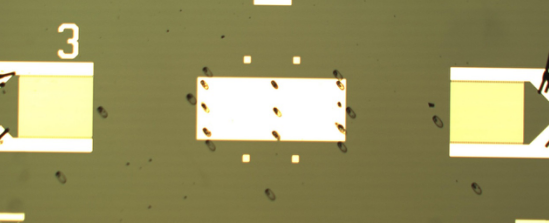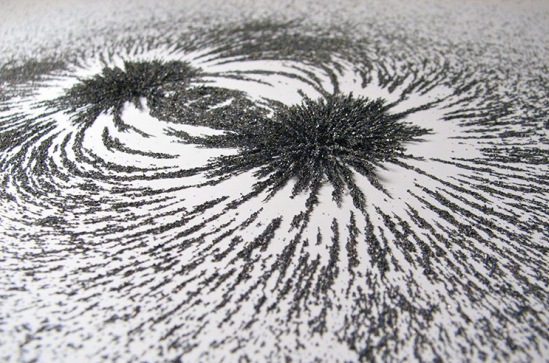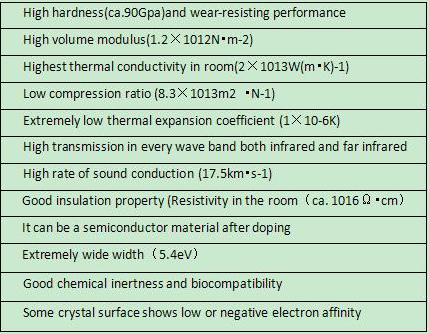Company tel:+86-379-63184520
Contact number:+86-15937921751
Postcode:471000
Email:info@yuxindiamond.com
Address:3-1-508 Luoyang National University Science Park, No. 2 Penglai Road, Jianxi District, Luoyang, China 471000
Diamond Dust Enables Low-cost, High-efficiency Magnetic Field Detection

UC Berkeley engineers have created a device that dramatically reduces the energy needed to power magnetic field detectors, which could revolutionize how we measure the magnetic fields that flow through our electronics, our planet, and even our bodies.
"The best magnetic sensors out there today are bulky, only operate at extreme temperatures, and can cost tens of thousands of dollars," said Dominic Labanowski, who helped create the device, which is made from nitrogen-infused diamonds, as a postdoctoral researcher in the department of electrical engineering and computer science. "Our sensors could replace those more difficult-to-use sensors in a lot of applications from navigation to medical imaging to natural resource exploration."
Each time a diamond-based sensor measures a magnetic field, it must first be blasted with 1 /2to 10 Watts of microwave radiation to prime them to be sensitive to magnetic fields, which is enough power to melt electronic components. The researchers found a new way to excite tiny diamonds with microwaves using 1000 times less power, making it feasible to create magnetic-sensing devices that can fit into electronics like cell phones.
This work was led by Sayeef Salahuddin's lab at UC Berkeley in collaboration with researchers from the Ohio State University. The team reports their device online Sep. 7 in the journal Science Advances.

Defective Diamonds
Bombarding a diamond with a jet of nitrogen gas can knock out some of its highly ordered carbon atoms, replacing them with nitrogen atoms. These nitrogen interlopers—called nitrogen vacancy (NV) centers—have unique properties that are well-understood by scientists.
"You can use these NV centers as very powerful sensors, but traditionally their applications have been limited because it takes a lot of power to read them," said Labanowski.
To detect magnetic fields, scientists first have to hit the NV centers with high-powered microwave radiation, equal to about one-hundredth the power of your standard microwave or ten times the power consumed by an average cell phone. They then illuminate the NV centers with a laser, which is absorbed and emitted by the nitrogen atoms. The strength of the magnetic field is related to the strength of the emitted laser light: the intensity of the emitted light can be used to measure the field strength
To create the device, the researchers placed diamond nanocrystals—containing thousands of NV centers apiece—onto a film called a multiferroic. This new type of material is capable of transferring microwave energy to the crystals much more efficiently. "This technique dramatically lowers the power consumption of the sensors and makes them usable for realistic applications," Labanowski said.
Imaging Inside the Body and Under the Earth
Medical applications of magnetic sensors include magnetoencephalography, which uses magnetic fields to measure brain waves, or magnetocardiography, which uses magnetic fields to image heart function. Currently these machines are the size of a small room and can cost upwards of $3 million.
"With low-power NV sensors, you could imagine taking a room-sized magnetoencephalography machine and turning it into something like a helmet, dramatically reducing the size and the costs," Labanowski said. The sensors could also be placed in planes or drones to aid in spotting rare earth metals underground, or used in cell phones to improve navigation.
Magnetic field detection is just one application of NV centers, Salahuddin says. The team is planning to refine their technology to use NV centers and other types of quantum systems in a wide variety of applications. "While we emphasized magnetic field sensing, our work could lead to electrical manipulation of quantum systems in general with much broader areas of application including quantum computing," Salahuddin said.
Diamond, as one of the most special materials in natural world, is featured with the highest hardness, low friction coefficient, high elasticity modulus, high thermal conductivity, high insulation class, wide energy gap, great sound propagation rate and favorable chemical stability, which are presented in below Table. In spite of such unique features, the natural diamond has always been existed in the form of gem, with its variability and rareness sharply limiting its application. Luoyang Yuxin Diamond Co., Ltd‘s CVD Diamond film, on the other hand, integrates such physical and chemical properties, with lower cost than natural diamond and applicable to be made into various shapes, thus enjoying extensive application prospect in electronic industry, optical field and mechanical industry.








